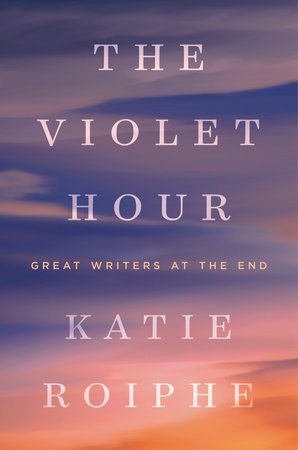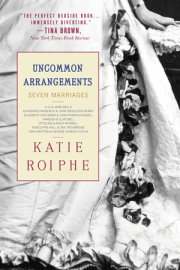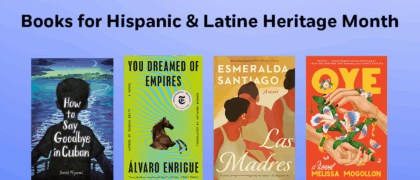Chapter 1
Susan Sontag
December 2004
If there is anyone on earth who could decide not to die it would be Susan Sontag; her will is that ferocious, that unbending, that unwilling to accept the average fates or outcomes the rest of us are bound by. She is not someone to be pushed around or unduly influenced by the idea that everyone has to do something or go through something, because she is and always has been someone who rises above. Nonetheless, right before Christmas, she is lying in a bed in Memorial Sloan Kettering Cancer Center, on the Upper East Side of Manhattan, doing something that very much appears to those around her to be dying.
One night she and her friend Sharon DeLano stay up late listening to Beethoven’s late string quartets in her hospital room. Sontag is very doped up. She is in a good enough mood to tell Sharon one of her favorite jokes. “Where does the general keep his armies?” Sharon answers, “I don’t know.” “In his sleevies,” Sontag says, smiling.
The next day she is much more sober. When Sharon arrives, Susan is reading the German filmmaker Rainer Werner Fassbinder’s juvenilia and they watch two movies together. Sharon has to press pause frequently, because Susan is talking through the whole movie, adding commentary and glosses.
Susan has known Sharon DeLano for a long time. They met in the mid-seventies when Sharon was working as an editor at The New York Review of Books. When Susan, who was recovering from her first cancer, doesn’t want to be alone, she calls Sharon, who comes up and keeps her company at her Riverside Drive apartment.
Sharon has been an editor at Vanity Fair, Random House, and The New Yorker, where she edits Susan’s work. On the surface, Sharon can seem tough, but to her friends she is warm and funny and ferociously loyal.
Sontag’s third cancer comes into focus when Sookhee Chinkhan, her housekeeper, who’s been with her for over a decade, sees bruises on her back when she is drawing her bath. Sookhee works for Susan five days a week, cleaning, cooking; there is a running chatter between them that other people are bewildered by.
The diagnosis of myelodysplastic syndrome, which leads to a particularly virulent strain of blood cancer, comes in March 2004. Sontag’s son, David Rieff, a journalist in his early fifties, accompanies her to the doctor for a follow-up visit after the initial tests.
David is tall and elegant. He is handsome in the way of a Roman coin. He has the slight air of being crown prince to a country that has suddenly and inexplicably gone democratic.
The doctor lays out the grimmest possible scenario: There is absolutely no chance of remission or cure. He suggests that Sontag do nothing and take the remaining six months or so left to live her life.
In the weeks after Susan is diagnosed, Sookhee notices that sometimes she says, “Wow wow,” and closes her eyes. Susan tells her it’s the pain.
Inevitably, this latest illness brings back Sontag’s first, dire cancer diagnosis in 1975. She was in her early forties when she discovered that she had stage 4 breast cancer. None of the doctors she initially consulted thought she had any hope at all, but she sought out aggressive treatments and she survived. From that point onward, the transcendence of ordinary illness and ordinary endings became incorporated and entangled with who she was—the person who seeks treatment, who solves her disease like a math problem, like a logical puzzle of the highest order. “I am gleaming with survivorship,” she wrote in the eighties. The brush with death was incorporated into her dark glamour, her writer’s pose. In an essay on photography, she wrote about “the sex appeal of death,” and this was a sex appeal that she took on, the danger and thrill of coming near to it, of breathing it in, and turning back.
The extremity of her breast cancer, once she recovered, fed into her long-standing idea of herself as exceptional. Another way to look at this is that her long-standing idea of herself as exceptional fed into the way she handled her cancer. Sharon DeLano says, “Because she was so fierce, because she was confrontational in terms of authority, her instinct was to confront it. She immediately decided that the doctors were wrong. This was a period when the idea of a second opinion was not a very common one . . . and she was so fierce that she went out and got one, and she survived. I think it was a vindication of who she was and how she thought. Because she didn’t do the conventional thing, and she thought for herself and she lived. And it sort of reinforced all the things she was and the kind of thinker that she was. What that meant was that the next time she got sick and the next time, she thought she could do the same thing.” Indeed, when she was diagnosed with uterine cancer in 1998, she avidly pursued arduous and aggressive treatments, chemotherapy, surgery, and she survived.
In her notebooks you can see the work of self-mythologizing all along, the labor of it, the relentless taking of raw life materials and shaping them into an idea of herself as exceptional. Everyone does this, of course, but Sontag does it with a million times more commitment, more intensity, and more success than other people. Her myth is all-encompassing, seductive. One of her friends comments that she has “star quality,” and he is referring not to her beauty but to her drive for attention, her self-conscious deployment of myth. She berates herself in her journals: “Don’t smile so much.” “Weakness is a contagion. Strong people rightly shun the weak.” It is her will to become that is most spectacular, her constant working on herself, tinkering with it as if it were an essay. She writes at twenty-four, “In the journal I do not just express myself more openly than I could do to any person; I create myself.”
Her drive for transformation was always powerful. She went to Berkeley at sixteen, transferring after a semester to the more academically rigorous University of Chicago. There she met a much older professor, Philip Rieff, and after ten days decided to marry him. She got a master’s degree in philosophy at Harvard, and then she left Rieff and their four-year-old son, David, for a couple of years to go and study at Oxford and the Sorbonne, when that was what she felt she needed to do.
From girlhood, Sontag’s private mythology was predicated on a contempt for the ordinary and a distance from it. She once mocked her good friend Stephen Koch for having a savings account and health insurance, because that was what ordinary, middle-class people had. Intellectuals and artists didn’t have savings accounts or health insurance.
In early interviews after her recovery from breast cancer, she seemed intoxicated by her proximity to death. She said the following in an almost giddy interview in The New York Times in 1978: “It has added a fierce intensity to my life, and that’s been pleasurable. . . . It’s fantastic knowing you’re going to die; it really makes having priorities and trying to follow them very real to you. That has somewhat receded now; more than two years have gone by, and I don’t feel the same sort of urgency. In a way I’m sorry; I would like to keep some of that feeling of crisis. . . . I think it’s good to be in contact with life and death. Many people spend their lives defending themselves against the notion that life is melodrama. I think it’s good not to damp down these conflicts. . . . You get terrific energy from facing them in an active and conscious way. For me, writing is a way of paying as much attention as possible.”
While she was being treated for her breast cancer, she did not stop working or thinking, or struggling to work and think. In the midst of chemotherapy, she was taking notes for her elegant and influential polemic Illness as Metaphor. In it she argues against the various fantasies that surround disease. Instead of poetry and emotionally charged beliefs, she argues, patients need clarity, rational thought, and medical information, to prepare themselves for the hard work of the cure. In her hospital room, she wrote in her journal, “I have become afraid of my own imagination,” and it was this fear she so brilliantly investigated and rejected in Illness as Metaphor. She writes that the imagination, the romantic overlay we give disease, is itself violent, destructive.
After the diagnosis of myelodysplastic syndrome, Sookhee sometimes sleeps over in the living room, because Susan does not want to be alone. One night she wakes up to Susan screaming. She is panicked. Sookhee has never seen her like this before. Sookhee sits on the bed and holds her and begins to pray, because that is all that she can think to do. “Please Lord, give Susan peace.”
In “The Way We Live Now,” her excellent short story about illness, about what it is like to be sick, Sontag writes: “Dying is an amazing high he said to Quentin. Sometimes I feel so fucking well, so powerful, it’s as if I could jump out of my skin. Am I going crazy, or what? Is it all this attention and coddling I’m getting from everybody, like a child’s dream of being loved? Is it the drugs? Or what? I know it sounds crazy but sometimes I think it is a fantastic experience.” She writes this in 1986 as someone who knows what dying feels like. She writes this as someone who was dying and then turned back.
That spring of 2004, after her diagnosis with leukemia, she turns her apartment into a center for medical research. Everyone is doing Internet searches, and friends are calling with suggestions and doctors’ names and obscure studies. Susan’s young assistant, Anne Jump, helps her find as much information about the illness as she can. They have gone into crisis mode, and everything is about finding a cure. Susan becomes a student of her disease; she studies, underlining in the leukemia pamphlet. Once, years earlier, she jotted down in her notebooks an Auden quote: “I must have knowledge and a great deal of it before I feel anything.”
The night before her first exploratory surgery for breast cancer in 1975, she sat in her hospital room at Sloan Kettering with a close friend. Susan was very much herself, which is to say that she had snapped at the intake nurse who called her “Sue” and brought another well-meaning friend who had tried to talk in the platitudes of adversity almost to tears. And yet all of this snappishness was energy, high spirits of a kind, the imposition of herself on the world.
The sun was going down and she suddenly decided she wanted to write the introduction to Peter Hujar’s book of photographs, Portraits in Life and Death, which she had agreed to do a long time before but had procrastinated. The portraits of prominent downtown figures included one staggeringly beautiful one of her, lying on a bed, staring upward, in a gray cable sweater; there were also the remarkable photographs of human remains from the catacombs in Palermo from the early sixties.
Hujar had brought the photographs of the catacombs over to Sontag’s house on Washington Place after he took them. There was some discussion of coming after Sontag’s eleven-year-old son, David, was asleep, so that the photographs wouldn’t alarm him and give him nightmares. There were skeletons of children draped in ruffles, skulls with bits of ribbon, skulls with wreaths of flowers; it is not the bones but the remnants of the lives, these little bits of cloth and ribbon, that are terrifying, evocative, that reach out and draw the viewer into the idea that everyone they love will die too.
That evening in the hospital in 1975, her friend found something wide and flat for her to write on, and she scribbled away. The mood of the essay is dreamier than usual. In her hospital bed, she took a romantic, intimate view of death with its “sweet poetry and its panic.” Her scrawled sentences have a mesmerized quality too. She was staring at something in the middle distance that we cannot normally see. “We no longer study the art of dying, a regular discipline and hygiene in older cultures,” she wrote, “but all eyes, at rest, contain that knowledge.”
There was peace in the room as she was writing. To be finishing, to be working: This was important to her. The friend who sat with her leafed through a magazine as the orange dusk flooded the room. The essay, one of her more graceful, unbelabored pieces of writing, took her less than an hour.
Her friend remembers her quoting Samuel Johnson with amusement: “Depend upon it, sir, when a man knows he is to be hanged in a fortnight it concentrates his mind wonderfully.” Peals of laughter after saying it.
If Sontag was fierce in her determination to fight in that first experience with cancer, her companion of the time, Nicole Stéphane, was equally fierce. Nicole tracked down Dr. Lucien Israel, who pioneered Sontag’s experimental treatment, in Paris. He wrote to Sontag, “I do not think your case is hopeless,” and that very faint expression of optimism was enough to spur her on. After the operation for her breast cancer, a radical mastectomy called a Halsted, someone sent flowers to Susan’s apartment on Riverside Drive. Nicole threw them off the terrace in rage. Flowers were for death.
Later, in Sontag’s private mythology, this fierceness is processed as a by-product of her intellect and determination: her refusal to accept her diagnosis or her mortality, her ability to shake off the metaphors of her illness and act. But now, in 2004, with this latest, dire diagnosis, she is laboring to maintain her belief in this specialness; she is now having to work to prop it up. She says to several people, including David, “I don’t feel special this time,” or “I don’t feel lucky this time.” She is working to fight off the dread, to find her way back to the luck, the specialness, again.
In the meantime, she doesn’t want to be alone. She doesn’t like the lights off. She has people coming through all the time, people in attendance. These people offer reassurance that she is who she was. One gets the sense that it is only in the dark, and alone, that she is dying.
Her long relationship with Annie Leibovitz, whom Sharon had introduced her to, is by now distant and troubled, but Annie is still in her life. Even at the high point of their relationship, they don’t like the label “couple” and prefer “friends” or “lovers.” Annie has taken photographs of Susan in hotels, in beds, in baths, that are playful, soft, open, evoking a happier time—unlike the usual daunting photographs of Sontag. They keep separate apartments that overlook each other, in the Chelsea building London Terrace.
Copyright © 2016 by Katie Roiphe. All rights reserved. No part of this excerpt may be reproduced or reprinted without permission in writing from the publisher.






